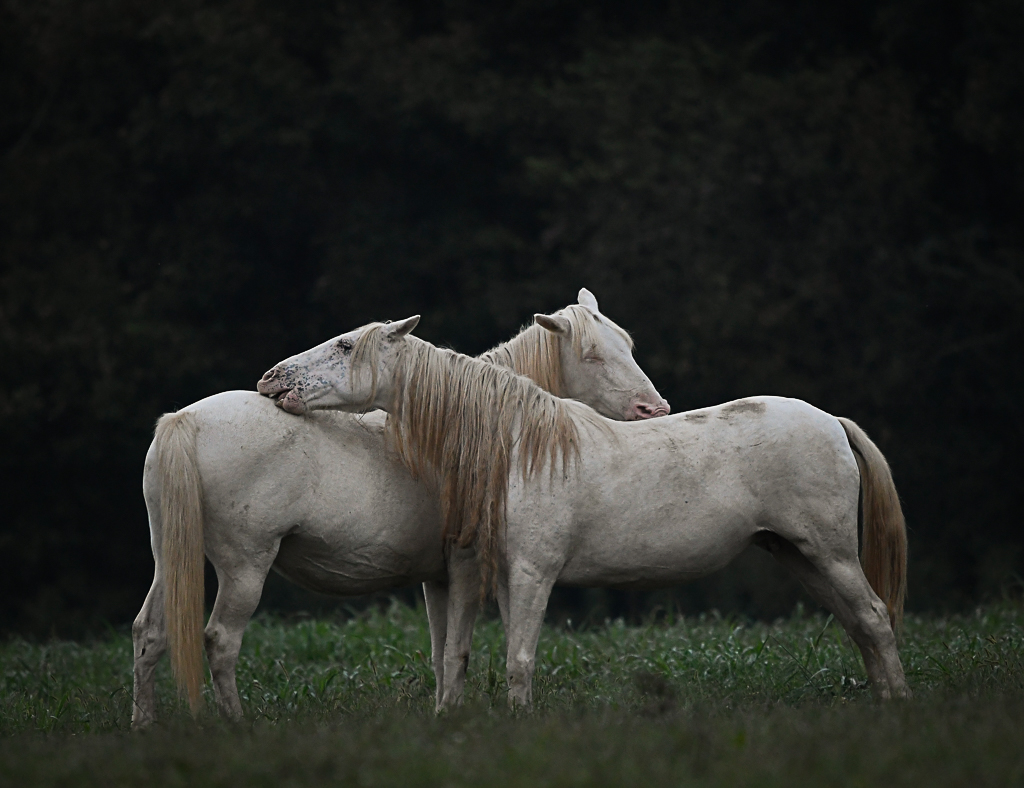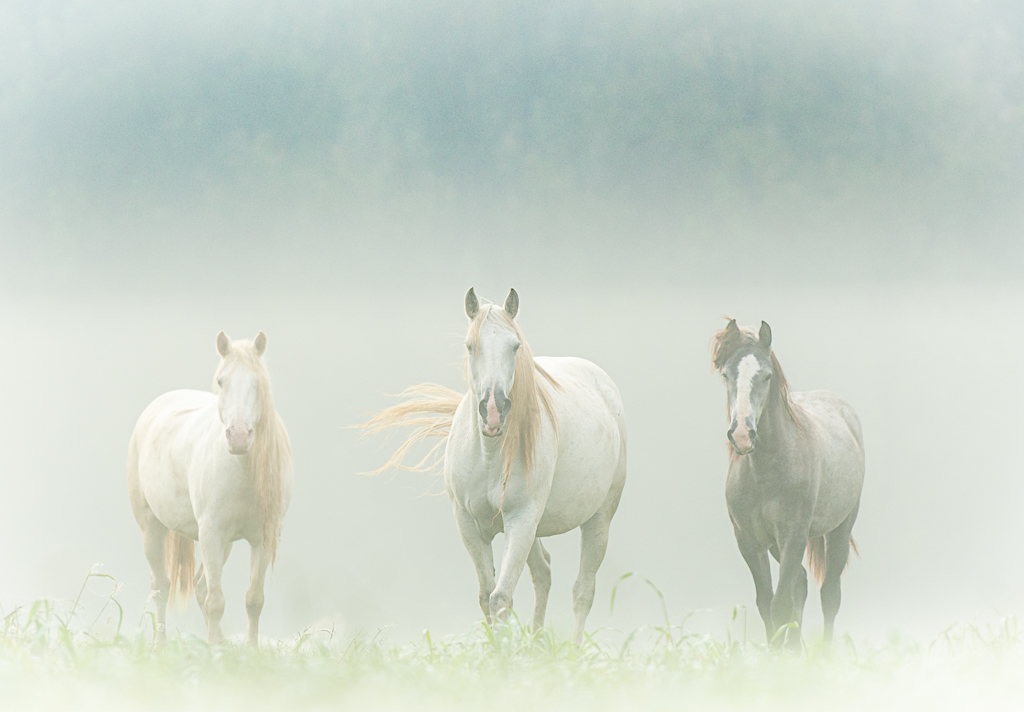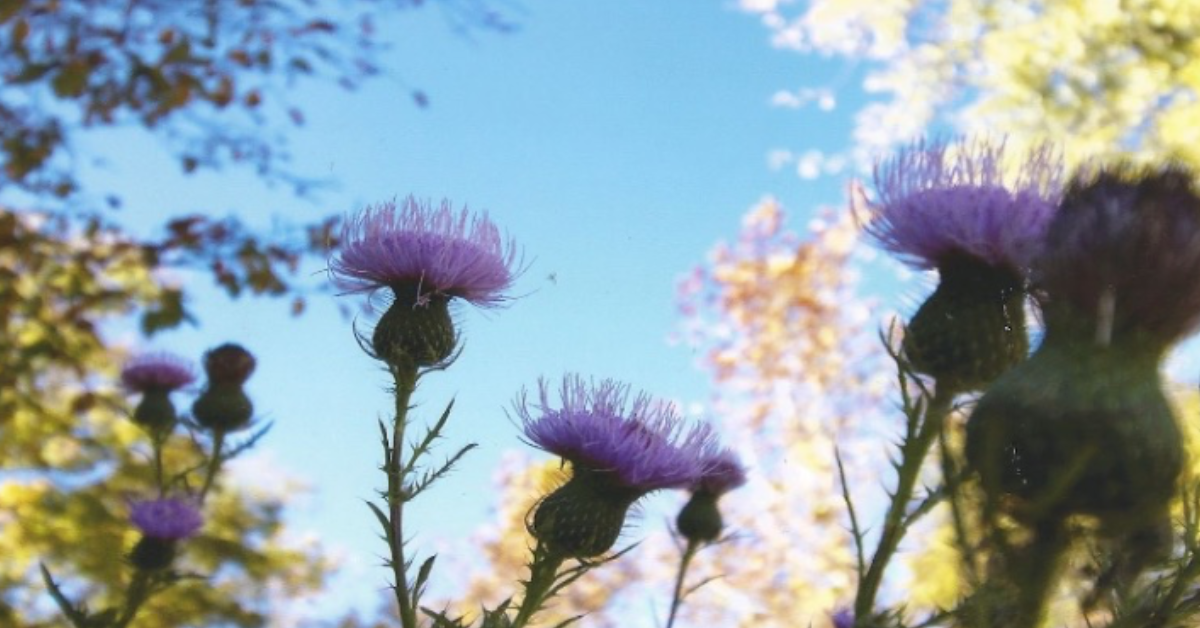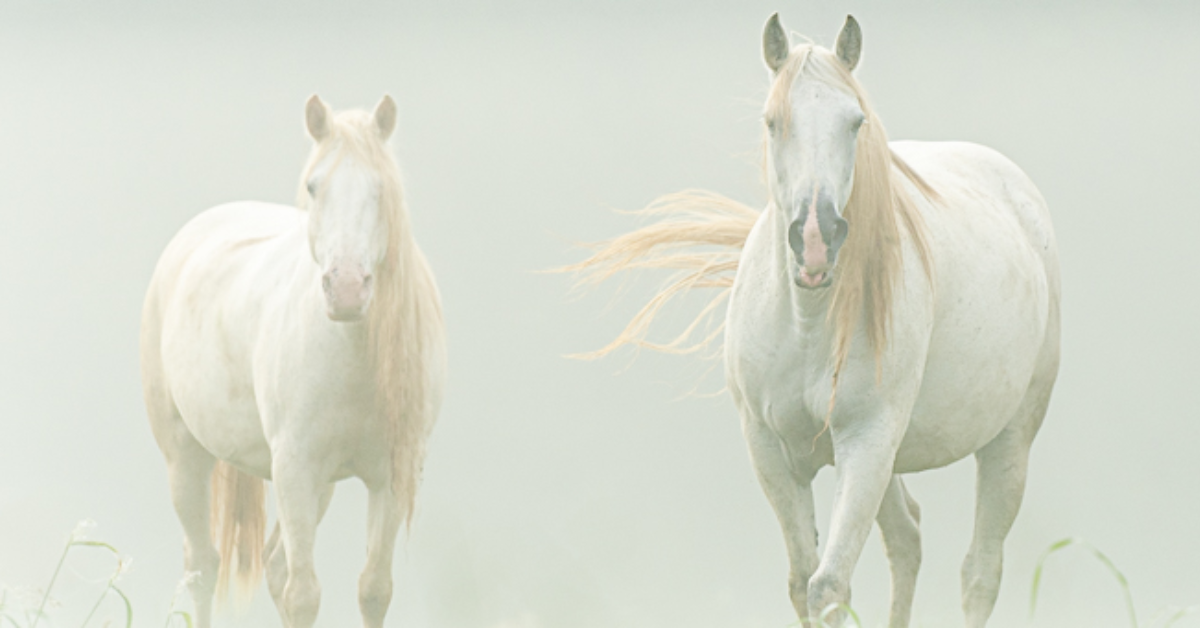
Photographer Jan Trabue
My favorite time to float down the river is when the sky is painted the pale hues of sunrise before the restlessness of the day begins. Mornings on the river can be intuitively transformative, welcoming me to a liquid solitude of gurgling, lapping, and ever-flowing waters of the beautiful Current River in Missouri. My senses become heightened and my heart starts to quicken. I am where my soul longs to be. For over 30 years, I have nurtured this connection to the beautiful rivers of the Missouri landscape; floating the depths and curves that follow their rippling seduction. As I float along, I feel connected with my surroundings. This sense of belonging beckons me back to the river year after year.
I am not the only creature hypnotized by the call of these spring-fed rivers. The wild horses of Eminence, Missouri, calls this place their home, frolicking in the beautiful deep blue waters of the Current and Jack’s Fork Rivers, and grazing in the pasture lands of the Ozark National Scenic
Riverways. These state residents are a coveted attraction, shrouded in mystery and allure for those who are lucky enough to encounter them.
The wild horses of Shannon County have roamed freely over the last century, exemplifying one species’ persistence to adapt and persevere in the face of adversity. The 1920s Dust Bowl devastated the middle and southwestern regions of the United States and was consequently followed by the financial hardships of the Great Depression. Local stories recall how farmers living in the St. Francois Mountains of the Missouri Ozarks were forced to abandon their livestock and domestic horses. Left to fend for themselves, these horses formed a herd and began thriving near the region known today as the Irish Wilderness. In 1964, The National Ozark Scenic Riverways was established to protect the 134 miles of the Current and Jack’s Fork Rivers from being dammed.
This nationally protected area should have secured the freedom of these horses and their natural habitat, but instead was a catalyst for their endangerment. This unique herd thrived and grew to approximately 20 horses throughout the next several decades. In 1991, these wild
horses were labeled as feral animals under national guidelines and were earmarked for removal from federal lands. Local residents became concerned about the fate of this free-roaming herd and formed the Missouri Wild Horse League in an attempt to keep the horses within the Ozark
National Scenic Riverways.
Legislation was filed with the state of Missouri and with the US Supreme Court to prevent the removal of these wild horses, but the herd was eventually denied protection. In 1994, the plight of these horses came to the attention of Missouri Congressman Bill Emerson and state senators
Kit Bond and John Ashcroft. Through their efforts, a joint bill was sponsored to make the herd permanent residents of the Ozark National Scenic Riverways and legislation was presented to President Bill Clinton for signature in 1996. This new legislation set up guidelines between the
Missouri Wild Horse League and the Ozark National Scenic Riverways to maintain and secure the herd population and natural habitat. Today about 35 horses call the Ozark National Scenic Riverways their home. Through the natural evolution of the herd, four smaller established bands roam the beautiful landscape surrounding Eminence. Their populations are carefully monitored, removing an abundance of stallions to prevent overpopulation. These stallions are gelded, wormed, and tested for Coggins before they are adopted out to local forever homes.

Photographer Jan Trabue
The journey of Missouri’s Wild Horses is an inspiring success story of how local citizens and state officials worked together to establish a mutual partnership as conservators of these beautiful animals to ensure their rightful place in the environment we share. This success story,
though comparatively small in scale, could be the blueprint for the federal Bureau of Land Management to secure the freedom of the American Mustang out West.
The first federal legislation to help protect wild mustangs and burros of the West passed in 1959. Known as The Wild Horse Annie Act, it was a grassroots campaign to stop the hunting of mustangs and burros on public lands by inspiring school-age children, and eventually, the general public, to write letters to Congress asking for their protection. The campaign was so successful, the public’s demands could no longer be ignored. Although legislation to stop hunting was passed, it failed to initiate a federal program to protect, manage, and control wild horses and burros. Once again, public outcry over the decline of wild horse populations on public lands could no longer be dismissed. In 1971, the Wild Free-Roaming Horses and Burros Act was passed, focusing on the vital components of protection, management, and population
control.
Since 1971, the Bureau of Land Management (BLM) has practiced the roundup and removal of tens of thousands of American mustangs and burros from their natural habitat to control their populations as specified by the federal government. Although strong legislation
has passed to protect these animals, current pressures from the “Cattlemen’s lobby”* have weakened the guidelines defining the criteria for removal in an effort “to legalize the mass slaughter of these national icons.”* To appease lobbying ranchers, once free-roaming horses and burros are now confined to fenced Herd Management Areas in response to rancher’s claims the wild horses and burros damage the soil of public lands with overpopulation, leaving few nutrients for their livestock to feed on. Yet, there is little proof these claims come from any scientific data. The practice of Herd Management Areas is counterintuitive to the instincts free-roaming mustangs are accustomed to. Wild free-roaming mustangs and burros can migrate as far as 30 miles a day, adapting to their territory’s changing weather and natural landscapes. These migrating patterns protect natural landscapes from the devastation of overuse.
During the Trump administration, the monthly fee for grazing livestock on public lands was lowered to just $1.35 per cow. In response to this announcement, Kirsten Stade, Advocacy Director for Public Employees for Environmental Responsibility said:
“Lowering already ultra-low grazing fees only encourages more abuse of public
rangelands. BLM’s own records reveal that much of the sagebrush out West is in
severely degraded condition due to excessive commercial livestock grazing.”
With an estimated 1.9 million livestock animals such as cattle, sheep, and goats using public lands for grazing, compared to the only 70,000 free-roaming horses left in the wild, the claims made against the wild horses and burros of the impacts on public lands can not be substantiated. Furthermore, the federal practice of rounding up and removing free-roaming mustangs and burros from their natural habitat and placing them in holding areas established for the sale and slaughter of what is considered “overpopulation” under the BLM guidelines has resulted in 60,000 mustangs and burros currently being held in federal captivity.
“The history of our country is in the bloodlines of our wild horses. Horses played a role in every significant development in our nation’s history, from building the West to fighting alongside Americans in our most significant wars. They’re the horse we rode in on. Only the power of the people will… preserve these national icons for future generations of Americans to enjoy.”
– Ellie Phipps Price, president of the American Wild Horse Campaign*
Wild Horse Annie would be proud of the continued advocacy on behalf of the American Wild Mustang and Burros. In December 2022, the U.S. Congress appropriated $11 million for new programs to stabilize wild horse and burro populations on public lands. New requirements for the BLM highlight changes in population management as well as a ban on the practice of killing and slaughtering federally-protected wild horses and burros. These new requirements will be the keystone to advancing the practice of a more humane and sustainable future for America’s wild horses and burros. Here are some of the new requirements:
● A robust fertility control vaccine program to keep horses out of costly government-holding facilities.
● Review the BLM’s controversial Adoption Incentive Program (AIP) for any program weaknesses that jeopardize the welfare of the mustangs and burros placed into private care.
● Pursuing partnerships with veterans and wild horse organizations to aid in humane fertility control management.
● Emphasizing the importance of screening adopters and purchasers to ensure the welfare and safe outcomes for the horses and burros adopted and sold by the U.S. Forest Service. – Congress Releases Omnibus Spending Bill that Includes a Better Way to Manage Nation’s Federally-Protected Wild Horses
With these new appropriations, it’s clear the rallying cries of concerned citizens are echoing in the halls of Congress again. In the spirit of one of our founding American icons and Wild Horse Annie’s pioneering efforts, let’s keep the rallying cries loud and clear.
“But darling, we weren’t given this wild soul to merely exist. Our mission is to shake up the world, turn it upside down and show our fellow human the difference between breathing and being fully alive.”
~ Unknown
Resources:
1. Wild Horses | Visit Eminence.
2. Wild Horses of Shannon County – Eminence, Missouri – Atlas Obscura
3. http://npshistory.com/publications/ozar/index.htm
4. Why You Should Care About America’s Last Wild Horses
5. Wild Horse and Burro Program History | Bureau of Land Management
6. American Wild Horse Campaign
7. Congress Releases Omnibus Spending Bill that Includes a Better Way to
Manage Nation’s Federally-Protected Wild Horses
8. Members of Congress Call for Oversight of Federal Wild Horse and Burro
Program
9. Wild Horses and the Ecosystem
10. Journal – Kimerlee Curyl Wild Horse Photography
11. A Steal of a Deal: How Ranchers Take Advantage of Public Lands • The
Revelator
12. The Irish Wilderness The Curious History of an Ozarks Place
13. The Wild Horses of Shannon County, Missouri
14. National Horse and Burro Rangeland Management Coalition








